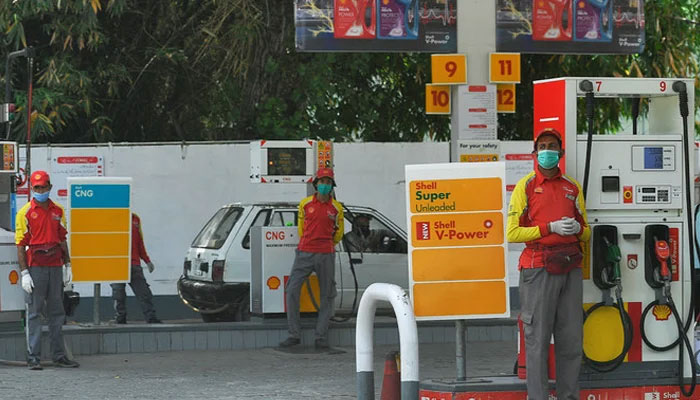Situationer: Refinery project is much needed but MoUs are dime a dozen
PAKISTAN has a crude oil refining capacity of roughly 400,000 barrels per day, and this has stayed at the same level for more than a decade now, while our population and demand continue to grow
PAKISTAN has a crude oil refining capacity of roughly 400,000 barrels per day, and this has stayed at the same level for more than a decade now, while our population and demand continue to grow.
A critical component for achieving growth is having access to affordable sources of energy, and necessary infrastructure to process and transport this energy. Little to no investment in refining capacity in the last many years pushed the country increasingly towards imported finished products, such as petrol, diesel, etc, while existing refineries did not have the capacity to meet the country’s demand.
It is estimated that 70 per cent of the demand for petrol in the country is met through imports, while 35 per cent of the demand for diesel is met through imports. As the population of the country grows, as does economic activity, so does the demand for petroleum products -- necessitating investment in infrastructure to develop indigenous capacity to process fuels and avoid excessive reliance on imports.
Pakistan also imports more than $2 billion of various petroleum by-products, including plastics, which can be developed indigenously through an integrated petrochemical complex.
The recent MoU (yet another one), between state-owned entities in the energy sphere, and ARAMCO of Saudi Arabia, calling for an investment of $10 billion for development of an integrated refinery petrochemical complex is critical for development of necessary indigenous capacity to ensure energy security.
The investment envisages establishment of crude oil processing capacity of 300,000 barrels per day, in addition to a petrochemical complex. This would not just invigorate economic activity in the region, but also improve overall energy efficiency, and affordability levels. A petrochemical complex will also reduce dependence on expensive imports of basic petrochemical by-products.
This will be a mega infrastructure project, potentially the single largest project relative to many other power and infrastructure projects executed in the country during the last two decades. And as such it will require firm commitments from all potential shareholders, as well as the foreign partner, which would also be playing a key role in enabling technology & knowledge transfer.
More importantly, it remains to be seen how the necessary capital for this would be arranged, as all local entities essentially have their liquidity stuck in circular debt. Only through a partial resolution of circular debt can sufficient capital be freed such that it can be invested in the project.
MoUs come dime a dozen; there have been half a dozen such MoUs in the last few years. How they are converted into a feasible business plan, and how a financial close for the project is achieved will remain a formidable challenge.
There is a dire need for such infrastructure investment in Pakistan, and it remains essential that both private and public sector capital is mobilized to invest heavily in infrastructure, which we have missed out on during the last decade or so — with the exception of CPEC-specific investments.
-
 Jon Bon Jovi Joins The Viral 2016 Throwback Trend With Nostalgic Photos
Jon Bon Jovi Joins The Viral 2016 Throwback Trend With Nostalgic Photos -
 Kate Middleton Hailed For Her Lack Of ‘obligation’ As Well As Altruistic, Selfless Qualities
Kate Middleton Hailed For Her Lack Of ‘obligation’ As Well As Altruistic, Selfless Qualities -
 Jason Momoa Says Being With Beau Adria Arjona Feels 'perfect'
Jason Momoa Says Being With Beau Adria Arjona Feels 'perfect' -
 Idris Elba Says One Mix-up Nearly Cost Him A Knighthood From King Charles
Idris Elba Says One Mix-up Nearly Cost Him A Knighthood From King Charles -
 Andrew Mountbatten Windsor Incurs Anger Of Biggest Royal
Andrew Mountbatten Windsor Incurs Anger Of Biggest Royal -
 Megan Fox, Machine Gun Kelly's Relationship 'is Just About Co-parenting'
Megan Fox, Machine Gun Kelly's Relationship 'is Just About Co-parenting' -
 Prince Harry, Meghan Markle Warned They Can’t Fool Brits Because It Won’t Land
Prince Harry, Meghan Markle Warned They Can’t Fool Brits Because It Won’t Land -
 South Korea’s Ex-president Yoon Suk Yeol, Sentenced To 5 Years In Prison: Key Details Explained
South Korea’s Ex-president Yoon Suk Yeol, Sentenced To 5 Years In Prison: Key Details Explained -
 Princess Beatrice Is ‘terrified’ Of Mom Fergie: ‘She’s Begging Her To Not Destroy Her Future’
Princess Beatrice Is ‘terrified’ Of Mom Fergie: ‘She’s Begging Her To Not Destroy Her Future’ -
 Harry Styles’ New Album Earns Subtle Nod From Zoe Kravitz’s Dad
Harry Styles’ New Album Earns Subtle Nod From Zoe Kravitz’s Dad -
 Ari Emanuel Makes A Decision Regarding His Memoir Alongside Prince Harry’s Ghostwriter
Ari Emanuel Makes A Decision Regarding His Memoir Alongside Prince Harry’s Ghostwriter -
 Buckingham Palace Gives The Spotlight To The Duke And Duchess Of Edinburgh: Video
Buckingham Palace Gives The Spotlight To The Duke And Duchess Of Edinburgh: Video -
 Eva Mendes Revisits Year She Hid Pregnancy
Eva Mendes Revisits Year She Hid Pregnancy -
 Andrew’s Eviction Marks: ‘the End Of Grifting’: ‘It A Catastrophic Fall From Grace’
Andrew’s Eviction Marks: ‘the End Of Grifting’: ‘It A Catastrophic Fall From Grace’ -
 ASAP Rocky Disses Rihanna's Ex Drake In New Track
ASAP Rocky Disses Rihanna's Ex Drake In New Track -
 Jennifer Aniston, Jim Curtis Face One Major Hurdle In Their Union
Jennifer Aniston, Jim Curtis Face One Major Hurdle In Their Union




